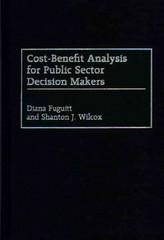Question
Part A Josie Company provides financialoperations consulting to small to mid-size organizations. While many factors influence and determine capacity (the total cost of which is
Part A
Josie Company provides financialoperations consulting to small to mid-size organizations.
While many factors influence and determine capacity (the total cost of which is $400,000 per year), Josie Company's management has decided to measure and report capacity costs on a per consulting-hour basis.
Management estimates that, on average, the existing labor resources can provide services that amount to $103.89 per hour. This amount takes into account down-time, training, and other normal labor-oriented considerations that influence productivity.
Ignoring these factors, the cost per hour would be $94.12.
The projected cost per hour for the upcoming accounting period - which includes a market slowdown - is $111.11 per hour. However, this estimate is an exception, as Josie normally provides services at full capacity (taking into account the labor-related factors noted above).
Required
1. There are 4 different measures of capacity. Using the information above, list these measures by name, and identify the number of hours that reflect each measure.
2. Management is considering whether to use a supply-based capacity measure or a demand-based capacity measure. to allocate costs associated with this internal service. Identify and discuss the benefits of using a (A) supply-based measure versus a (B) demand-based measure.
Part B
Peripheral Company produces two product, Product C and Product D.
The selling price for Product C is $46 per unit; the selling price for Product D is $50 per unit.
The variable costs for Product C are $20 per unit; the variable costs Product D are $25 per unit.
Both products use two types of labor, from separate pools (i.e., types) of employees: Pool 1 and Pool 2.
For the upcoming accounting period, Pool 1 labor has 12,000 hours available. For the same accounting period, Pool 2 labor has 25,000 hours available.
Product C uses 0.5 hours of Pool 1 labor and 1.9 hours of Pool 2 labor.
Product D uses 1 hour of Pool 1 labor and 2.2 hours of Pool 2 labor.
Required
Given a short (or even intermediate) term financial perspective, what would you recommend to Peripherals' management regarding how to manage the two sources of labor, assuming that at least one of the two pools of labor is the most constrained resources.
Show calculations to support your answer.
Step by Step Solution
There are 3 Steps involved in it
Step: 1

Get Instant Access to Expert-Tailored Solutions
See step-by-step solutions with expert insights and AI powered tools for academic success
Step: 2

Step: 3

Ace Your Homework with AI
Get the answers you need in no time with our AI-driven, step-by-step assistance
Get Started


